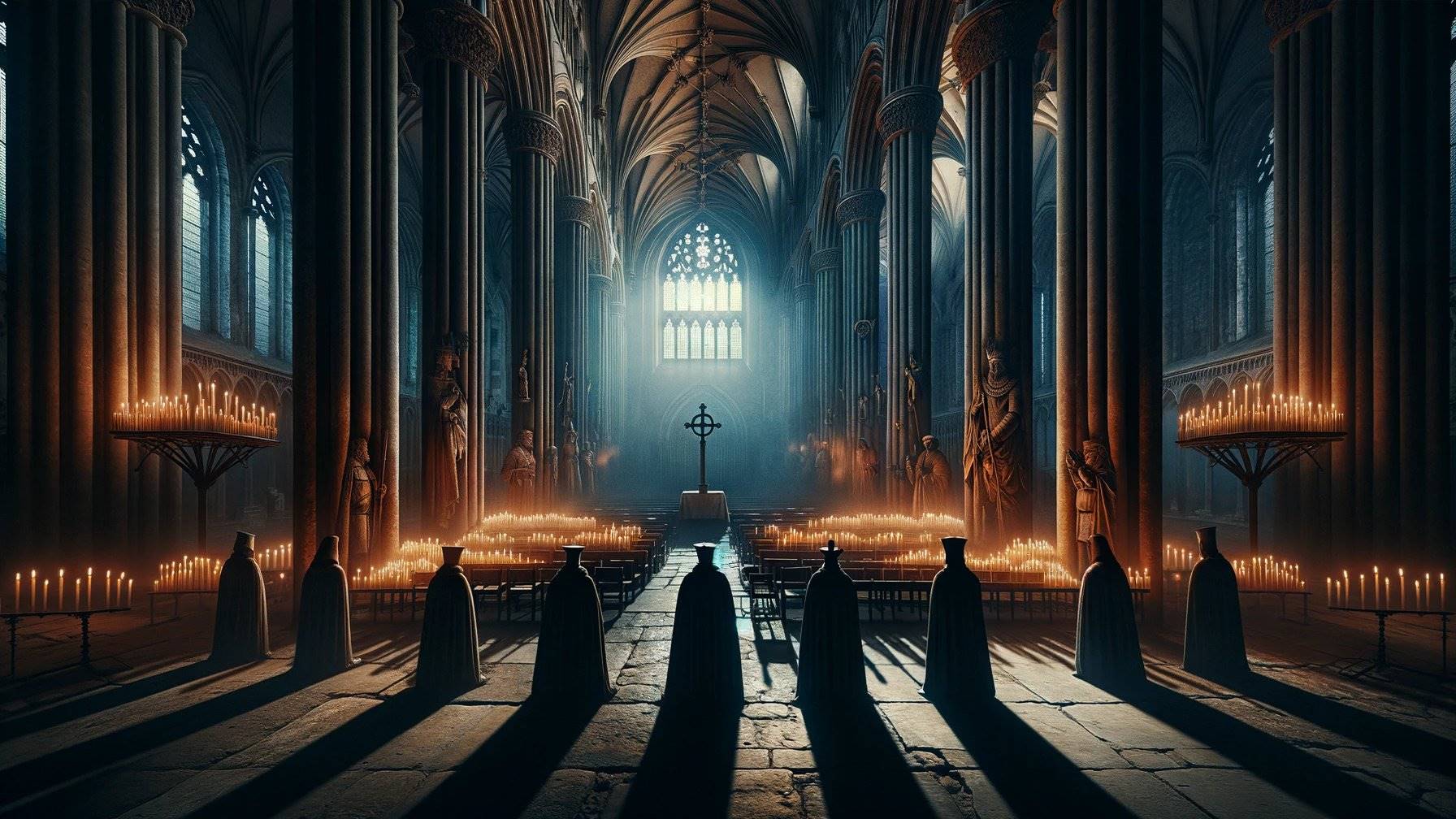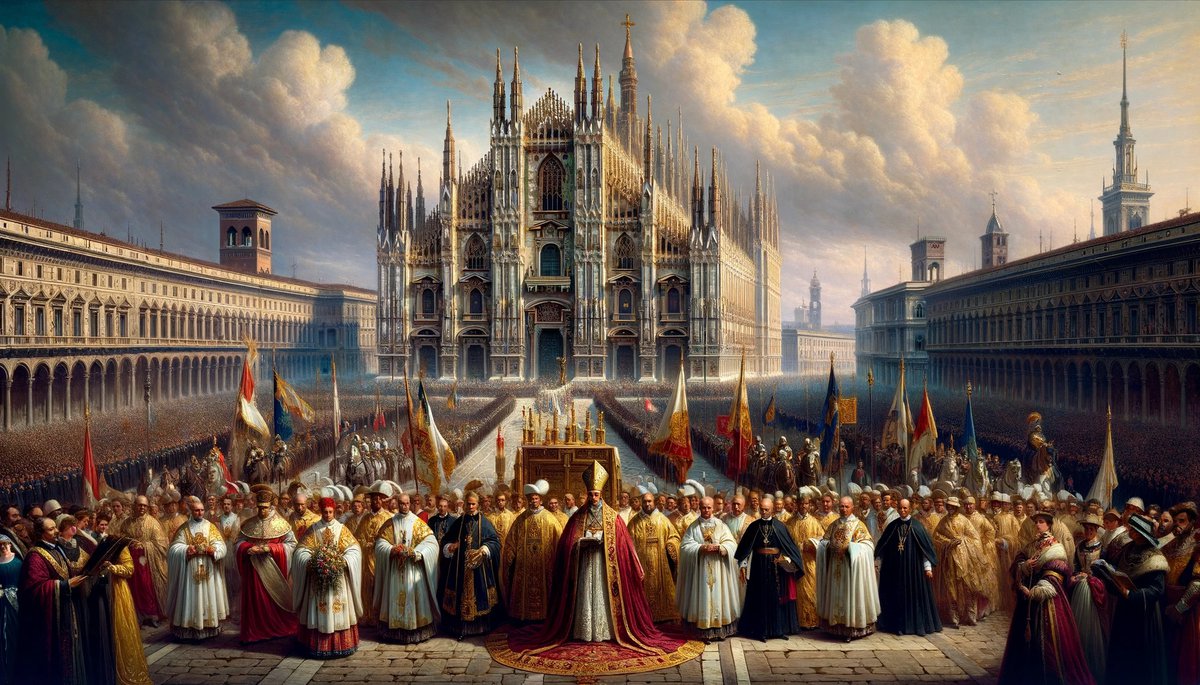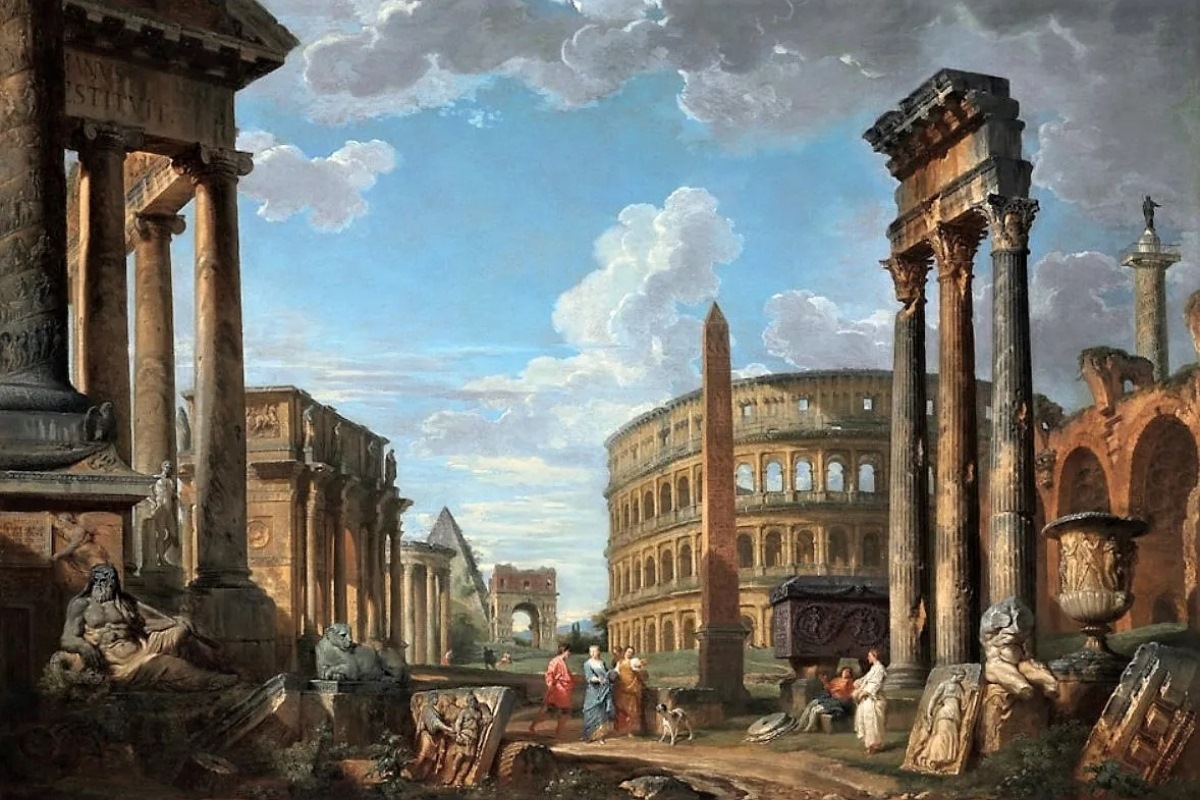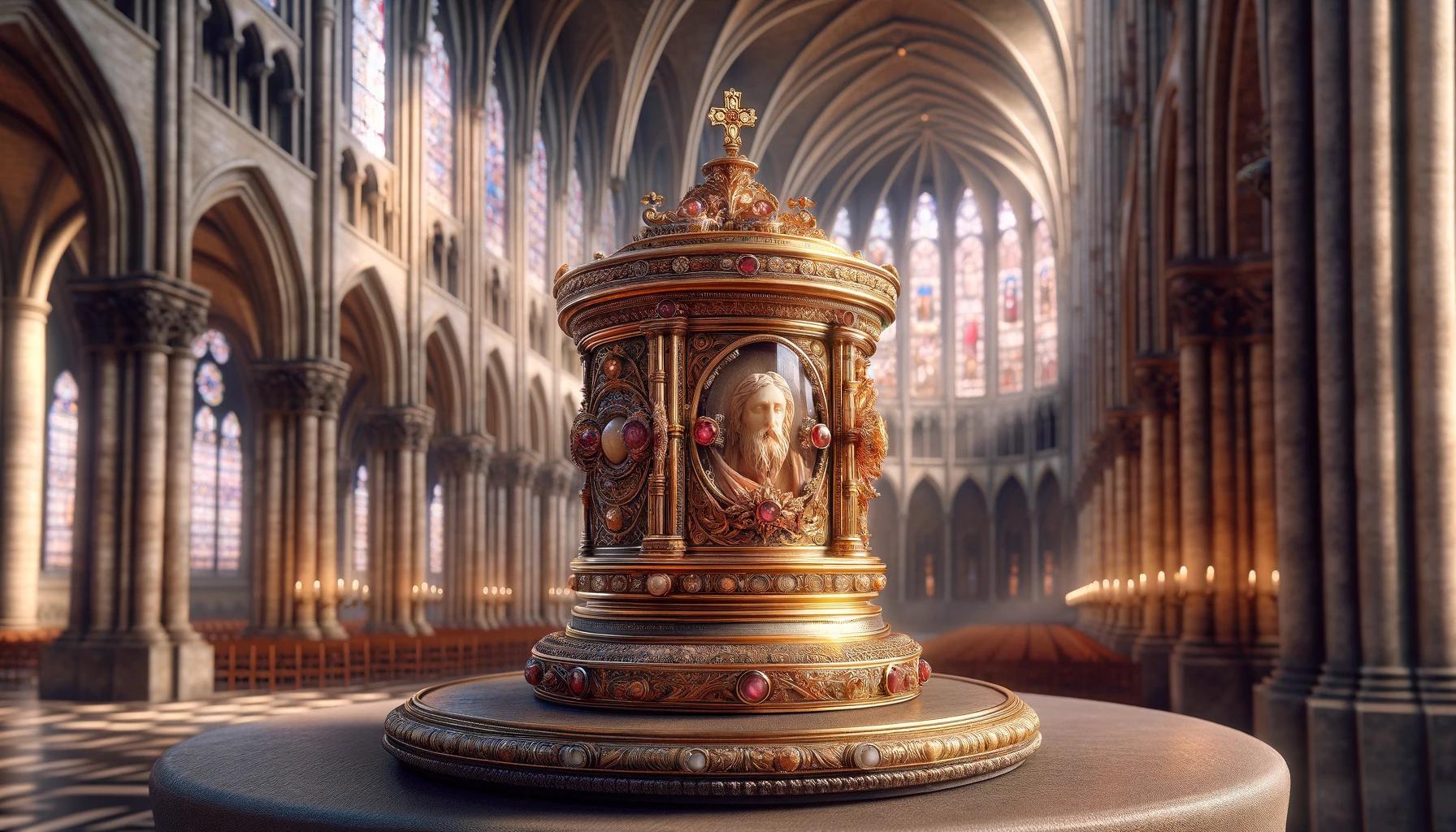Home>Arts and Culture>Why Did They Travel To Canterbury Cathedral


Arts and Culture
Why Did They Travel To Canterbury Cathedral
Published: February 16, 2024
Ericka Andersen, an editor at Christian.net, expertly merges digital strategy with content creation, focusing on faith and societal issues. Her communication skills enhance the platform's engaging narratives, fostering meaningful dialogue on belief's impact on society.
Discover the historical significance of Canterbury Cathedral and the artistic and cultural influences that drew people to this iconic site. Explore the rich heritage and artistic treasures of this renowned cultural landmark.
(Many of the links in this article redirect to a specific reviewed product. Your purchase of these products through affiliate links helps to generate commission for Christian.net, at no extra cost. Learn more)
Table of Contents
Introduction
Canterbury Cathedral stands as a timeless testament to the enduring allure of religious and cultural landmarks. Nestled in the heart of Canterbury, Kent, England, this majestic structure has beckoned travelers and pilgrims for centuries. Its rich history, architectural splendor, and spiritual significance have made it a magnet for visitors from across the globe.
The cathedral's origins can be traced back to the 6th century when St. Augustine, a missionary sent by Pope Gregory the Great, established his seat in Canterbury. This marked the birth of the Canterbury Cathedral, which has since evolved through the ages, bearing witness to pivotal moments in English history.
From the awe-inspiring grandeur of its Gothic architecture to the hallowed halls that echo with centuries of prayers, Canterbury Cathedral exudes an aura of reverence and tranquility. Its soaring spires and intricate stonework stand as a testament to the skill and dedication of the craftsmen who toiled to bring this sacred edifice to life.
The cathedral's significance extends beyond its architectural magnificence. It has been a site of pilgrimage for devout Christians for over a millennium, drawing believers seeking solace, redemption, and spiritual enlightenment. The allure of this hallowed site has transcended religious boundaries, captivating the hearts and minds of people from diverse cultural and spiritual backgrounds.
As we delve into the historical significance of Canterbury Cathedral, explore the timeless tradition of pilgrimage, and unravel the enduring legacy of Chaucer's Canterbury Tales, we will embark on a journey through time and tradition. Join us as we unravel the mystique and allure of this iconic landmark, and discover why it continues to captivate the hearts of modern-day visitors.
Read more: Where Is Canterbury Cathedral
Historical significance of Canterbury Cathedral
Canterbury Cathedral holds a profound historical significance that transcends time and borders. Its roots can be traced back to the early 7th century when it became the seat of the Archbishop of Canterbury, marking it as the primary center of Christianity in England. The cathedral's historical tapestry is woven with threads of triumph and tribulation, reflecting the resilience and enduring spirit of the English people.
One of the defining moments in the cathedral's history occurred in 1170 when Archbishop Thomas Becket was brutally murdered within its hallowed walls. This tragic event catapulted Canterbury Cathedral into the annals of history, transforming it into a symbol of religious martyrdom and defiance against tyranny. The martyrdom of Thomas Becket elevated the cathedral to a place of pilgrimage, drawing devout Christians from far and wide who sought solace and spiritual enlightenment at this sacred site.
Throughout the centuries, Canterbury Cathedral bore witness to a myriad of historical events, including the Reformation and the English Civil War, each leaving an indelible mark on its storied walls. The cathedral's architectural evolution mirrors the shifting tides of history, with each arch, column, and stained glass window serving as a testament to the artistic and spiritual aspirations of the era in which it was crafted.
The UNESCO designation of Canterbury Cathedral as a World Heritage Site further underscores its global significance, recognizing it as a cultural treasure that transcends national boundaries. Its inclusion on this prestigious list serves as a testament to the cathedral's universal appeal and enduring legacy, ensuring that future generations will continue to marvel at its splendor and historical resonance.
Canterbury Cathedral stands as a living chronicle of England's religious, cultural, and architectural heritage, embodying the collective memories and aspirations of the nation. Its historical significance resonates not only within the confines of its sacred precincts but also in the hearts and minds of all who are captivated by its timeless allure.
Pilgrimage to Canterbury Cathedral
Pilgrimage to Canterbury Cathedral has been an enduring tradition that spans over a millennium, drawing devout believers, seekers of solace, and curious travelers to its hallowed precincts. The act of embarking on a pilgrimage to this sacred site transcends mere physical travel; it represents a spiritual journey, a quest for enlightenment, and a communion with the divine.
For countless pilgrims, the journey to Canterbury Cathedral holds profound significance, symbolizing a sacred odyssey to seek solace, redemption, and spiritual renewal. The pilgrimage route to Canterbury, known as the Pilgrims' Way, winds through the picturesque English countryside, evoking a sense of reverence and introspection as travelers tread in the footsteps of those who came before them.
The allure of Canterbury Cathedral as a pilgrimage destination can be attributed to its association with Archbishop Thomas Becket, whose martyrdom elevated the site to a place of veneration and spiritual significance. The cathedral's hallowed halls resonate with the echoes of centuries of prayers, tears, and fervent supplications, creating an atmosphere that beckons pilgrims to lay bare their hopes, fears, and aspirations before the divine.
The pilgrimage to Canterbury Cathedral is not merely a religious ritual; it is a transformative experience that transcends denominational boundaries, welcoming people of all faiths and backgrounds. It serves as a poignant reminder of the universal human yearning for transcendence, unity, and spiritual fulfillment.
The enduring appeal of pilgrimage to Canterbury Cathedral lies in its ability to kindle a sense of introspection, fostering a deep connection with the sacred and the eternal. As pilgrims traverse the time-worn paths leading to the cathedral, they are enveloped in a tapestry of history, faith, and reverence, forging an indelible bond with the spiritual legacy of the site.
In essence, the pilgrimage to Canterbury Cathedral represents a timeless tradition that continues to resonate with modern-day seekers, offering a sanctuary for contemplation, spiritual communion, and a profound encounter with the divine. It stands as a testament to the enduring power of sacred journeys and the universal human quest for transcendence and spiritual awakening.
Chaucer's Canterbury Tales
Geoffrey Chaucer's magnum opus, "The Canterbury Tales," stands as a literary masterpiece that weaves a rich tapestry of human experiences, societal nuances, and spiritual introspection. Written in the late 14th century, this iconic work comprises a collection of stories narrated by a diverse group of pilgrims making their way to Canterbury Cathedral. Chaucer's masterful storytelling prowess and keen insight into human nature have immortalized "The Canterbury Tales" as a timeless classic that continues to captivate readers and scholars alike.
The tales encompass a wide spectrum of genres, ranging from ribald comedy to profound moral allegory, offering a panoramic view of medieval English society. Through the colorful array of characters, Chaucer skillfully portrays the complexities of human nature, delving into themes of love, betrayal, honor, and the eternal quest for spiritual fulfillment. Each pilgrim's tale serves as a microcosm of the human experience, reflecting the diverse aspirations, follies, and triumphs that define the human condition.
One of the most compelling aspects of "The Canterbury Tales" is its vivid portrayal of the pilgrimage itself as a metaphor for the journey of life. As the pilgrims share their tales during the arduous trek to Canterbury, they engage in a profound exchange of narratives, reflecting the multifaceted nature of human existence. The pilgrimage becomes a crucible for self-discovery, moral reflection, and communal bonding, transcending the physical act of travel to become a transformative odyssey of the soul.
Chaucer's astute observations of human behavior and societal dynamics are evident in the multifaceted characters that populate "The Canterbury Tales." From the noble Knight to the bawdy Miller, each pilgrim represents a distinct facet of medieval society, offering a panoramic view of the social tapestry of the time. Through their tales, Chaucer deftly explores the intricacies of human relationships, the clash of moral values, and the timeless quest for meaning and redemption.
"The Canterbury Tales" endures as a literary treasure that transcends the boundaries of time and culture, offering a profound exploration of the human experience. Chaucer's enduring legacy lies in his ability to craft a narrative that resonates with the universal themes of love, morality, and the perennial search for spiritual enlightenment. As modern readers embark on their own metaphorical pilgrimage through the pages of this timeless work, they are invited to partake in the timeless tradition of storytelling and introspection, perpetuating the enduring allure of "The Canterbury Tales" for generations to come.
Modern-day visitors to Canterbury Cathedral
Modern-day visitors to Canterbury Cathedral are drawn to this iconic landmark for a myriad of reasons, each seeking to unravel the layers of history, spirituality, and architectural grandeur that define this sacred site. As they traverse the cobbled streets of Canterbury and approach the cathedral's imposing facade, visitors are greeted by a palpable sense of reverence and awe, setting the stage for a transformative encounter with centuries of tradition and legacy.
For many, a visit to Canterbury Cathedral represents a pilgrimage of the soul, a quest for spiritual solace, and a communion with the divine. The cathedral's hallowed halls, adorned with exquisite stained glass windows and ornate carvings, provide a sanctuary for introspection and contemplation, inviting visitors to immerse themselves in the timeless aura of sacred tranquility. Whether they come seeking solace in times of personal turmoil or simply yearning for a moment of respite from the bustle of modern life, visitors find solace in the cathedral's serene embrace.
Beyond its spiritual significance, Canterbury Cathedral also beckons history enthusiasts and admirers of architectural marvels. The intricate Gothic design, soaring spires, and meticulously crafted interior details offer a feast for the eyes and a testament to the ingenuity of medieval craftsmen. As visitors gaze upon the awe-inspiring architecture and delve into the cathedral's storied past, they are transported back in time, forging a profound connection with the historical tapestry that envelops the site.
Moreover, Canterbury Cathedral serves as a cultural touchstone, attracting art aficionados, scholars, and curious travelers eager to delve into the annals of English heritage. The cathedral's status as a UNESCO World Heritage Site underscores its universal appeal, drawing visitors from across the globe who seek to bask in the splendor of its cultural and historical significance.
In the modern age, Canterbury Cathedral continues to resonate with visitors from diverse backgrounds, offering a timeless refuge for those in search of spiritual nourishment, historical enlightenment, and a profound connection to the collective human experience. As visitors depart from this sacred site, they carry with them not only memories of its grandeur but also a sense of renewal, inspiration, and a deeper appreciation for the enduring legacy of Canterbury Cathedral.
Read more: When Was The Canterbury Cathedral Built
Conclusion
Canterbury Cathedral stands as a timeless beacon of history, spirituality, and cultural heritage, weaving a tapestry of human experiences that transcends the boundaries of time and space. From its humble origins in the 6th century to its current status as a revered UNESCO World Heritage Site, the cathedral has borne witness to the ebb and flow of history, embodying the collective memories and aspirations of generations past and present.
The allure of Canterbury Cathedral lies not only in its architectural splendor but also in its profound spiritual resonance. As a site of pilgrimage for over a millennium, it has served as a sanctuary for the devout, a refuge for the weary, and a testament to the enduring human quest for transcendence and spiritual enlightenment. The pilgrimage to Canterbury Cathedral, whether undertaken in medieval times or in the modern era, represents a timeless tradition that continues to captivate the hearts and minds of seekers from all walks of life.
Furthermore, the enduring legacy of Chaucer's "The Canterbury Tales" perpetuates the cathedral's mystique, offering a literary portal through which readers can embark on a metaphorical pilgrimage, delving into the complexities of human nature, societal dynamics, and the eternal quest for spiritual fulfillment. The tales serve as a testament to the enduring power of storytelling and introspection, perpetuating the cathedral's allure for generations to come.
In the modern age, Canterbury Cathedral remains a cultural touchstone, drawing visitors from across the globe who seek to immerse themselves in its historical resonance, architectural grandeur, and spiritual sanctity. Whether they come as pilgrims in search of solace, history enthusiasts eager to unravel the cathedral's storied past, or curious travelers yearning for a glimpse of its timeless splendor, visitors depart with a deeper appreciation for the enduring legacy of this iconic landmark.
As the sun sets over the hallowed spires of Canterbury Cathedral, it continues to stand as a testament to the enduring human yearning for connection, transcendence, and the eternal pursuit of meaning. Its legacy endures, beckoning travelers and pilgrims to embark on their own odyssey of discovery, forging a timeless bond with the sacred and the eternal. Canterbury Cathedral remains not merely a monument of stone and mortar but a living testament to the enduring spirit of humanity, inviting all who cross its threshold to partake in the timeless tradition of pilgrimage, introspection, and spiritual communion.














